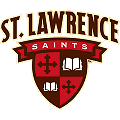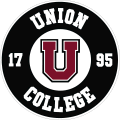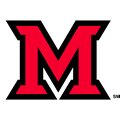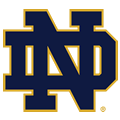 St. Lawrence
St. LawrenceNickname: Saints
Location: Canton, NY
Founded: 1856
Conference: ECAC
National Championships: 0
Last NCAA Appearance: 2007
Last Frozen Four: 2000
Coach: Greg Carvel (4th season)
2014-15 Record: 20-14-3 (14-7-1 ECAC, 2nd place)
Series: SLU leads, 80-56-6
First Game: January 3, 1951 (Troy, NY)
Last RPI win: February 28, 2015 (Troy, NY)
Last SLU win: March 14, 2015 (Canton, NY)
2015-16 games: November 6, 2015 (Canton, NY); February 5, 2016 (Troy, NY)
Key players: F Sean McGovern, sr.; F Tommy Thompson, sr.; F Brian Ward, sr.; D Gavin Bayreuther, jr.; F Woody Hudson, jr.; D Eric Sweetman, jr; D Nolan Gluchowski, so; G Kyle Hayton, so.; F Christian Horn, so.; F Ryan Lough, so.; F Mike Marnell, so.; D Matt Purmal, so.; F Michael Ederer, fr.; D R.J. Gicewicz, fr.; F Jacob Pritchard, fr.
Key losses: F Patrick Doherty, F Gunnar Hughes, D Chris Martin
Previous KYE installments:
Coming into last year, there was a question about where the goals were going to come from for St. Lawrence, considering the departure of the program's top offensive threats. The answer came pretty quickly - they were going to come from everywhere. That's what turned SLU from a team most picked to finish near the bottom of the standings into a team that ultimately finished near the very top.
The solution to not having a great deal in the way of standout players who are going to score goals for your team every weekend is to have a balanced attack that makes pretty much every player on the ice a threat to score, even if none of them individually is a serious concern. In some ways, that's actually the superior way to play it, and that's exactly what the Saints got out of their forwards last season. No SLU player reached the 30 point mark last season, and only one - Ward - made it to 25. Only two players - Hughes and Marnell - scored 10 or more goals. But crucially, the Saints had 15 different players attain the 10 point plateau, and 12 who scored five or more goals on the season.
Combined with the excellent play in net by the obvious ECAC Rookie of the Year Hayton (who also was a serious candidate for the Dryden Award) and the excellent two-way abilities on the blue line from Bayreuther, Gluchowski, and Sweetman, and the Saints were very much a force to be reckoned with pretty much all season long.
Uneven results in non-conference games kept SLU from their first NCAA tournament appearance in several seasons: being swept by Vermont in a home-and-home in December and picking up only a tie in two games with Northeastern really hurt, as did a loss to RIT in the season opener. The Saints rolled through the heart of the ECAC schedule, losing just twice in league play after New Year's before being swept at the Capital District on the last weekend of the season.
Game 1 of the ECAC quarterfinals between St. Lawrence and RPI is as good of a goaltender's duel as you're ever going to see. Hayton and Jason Kasdorf went blow for blow for 59 minutes before Martin scored in the game's final minute, the goal that essentially won the series for the Saints. SLU never led the semifinal game in Lake Placid against Colgate, but they never trailed by more than one and three times tied things up.
So the story of St. Lawrence for this upcoming season is very much one of unfinished business. Despite an outstanding record and a second place finish, SLU still finished the year empty-handed. The Saints' three key losses aren't nothing - Doherty was second on the team in scoring, Hughes led the team in goals with 12, and Martin was more or less a fourth attacking defenseman to go with the aforementioned trio - but the good news is that the core of what was there last season is back again for more this year. 11 of the 15 players who scored 10 points are back.
There's no one piece that makes St. Lawrence dangerous - they played excellent team hockey last season. Hayton, perhaps, was the glue that made everything stick, but the Saints relied more on team effort than individual talent and it paid off in spades. They've lost very little from last season. But as RPI showed at the end of the season last year, good goaltending can keep a team in it against SLU - Scott Diebold's home swan song will be long remembered, and no one can fault what Kasdorf did in the quarterfinals. Still, if SLU can repeat last year's balanced attack and roll three or even four dangerous scoring lines, they'll be tough to beat, and another big run through the ECAC schedule could be in the works. That makes them a legitimate contender for the very top of the league table.
The solution to not having a great deal in the way of standout players who are going to score goals for your team every weekend is to have a balanced attack that makes pretty much every player on the ice a threat to score, even if none of them individually is a serious concern. In some ways, that's actually the superior way to play it, and that's exactly what the Saints got out of their forwards last season. No SLU player reached the 30 point mark last season, and only one - Ward - made it to 25. Only two players - Hughes and Marnell - scored 10 or more goals. But crucially, the Saints had 15 different players attain the 10 point plateau, and 12 who scored five or more goals on the season.
Combined with the excellent play in net by the obvious ECAC Rookie of the Year Hayton (who also was a serious candidate for the Dryden Award) and the excellent two-way abilities on the blue line from Bayreuther, Gluchowski, and Sweetman, and the Saints were very much a force to be reckoned with pretty much all season long.
Uneven results in non-conference games kept SLU from their first NCAA tournament appearance in several seasons: being swept by Vermont in a home-and-home in December and picking up only a tie in two games with Northeastern really hurt, as did a loss to RIT in the season opener. The Saints rolled through the heart of the ECAC schedule, losing just twice in league play after New Year's before being swept at the Capital District on the last weekend of the season.
Game 1 of the ECAC quarterfinals between St. Lawrence and RPI is as good of a goaltender's duel as you're ever going to see. Hayton and Jason Kasdorf went blow for blow for 59 minutes before Martin scored in the game's final minute, the goal that essentially won the series for the Saints. SLU never led the semifinal game in Lake Placid against Colgate, but they never trailed by more than one and three times tied things up.
So the story of St. Lawrence for this upcoming season is very much one of unfinished business. Despite an outstanding record and a second place finish, SLU still finished the year empty-handed. The Saints' three key losses aren't nothing - Doherty was second on the team in scoring, Hughes led the team in goals with 12, and Martin was more or less a fourth attacking defenseman to go with the aforementioned trio - but the good news is that the core of what was there last season is back again for more this year. 11 of the 15 players who scored 10 points are back.
There's no one piece that makes St. Lawrence dangerous - they played excellent team hockey last season. Hayton, perhaps, was the glue that made everything stick, but the Saints relied more on team effort than individual talent and it paid off in spades. They've lost very little from last season. But as RPI showed at the end of the season last year, good goaltending can keep a team in it against SLU - Scott Diebold's home swan song will be long remembered, and no one can fault what Kasdorf did in the quarterfinals. Still, if SLU can repeat last year's balanced attack and roll three or even four dangerous scoring lines, they'll be tough to beat, and another big run through the ECAC schedule could be in the works. That makes them a legitimate contender for the very top of the league table.







